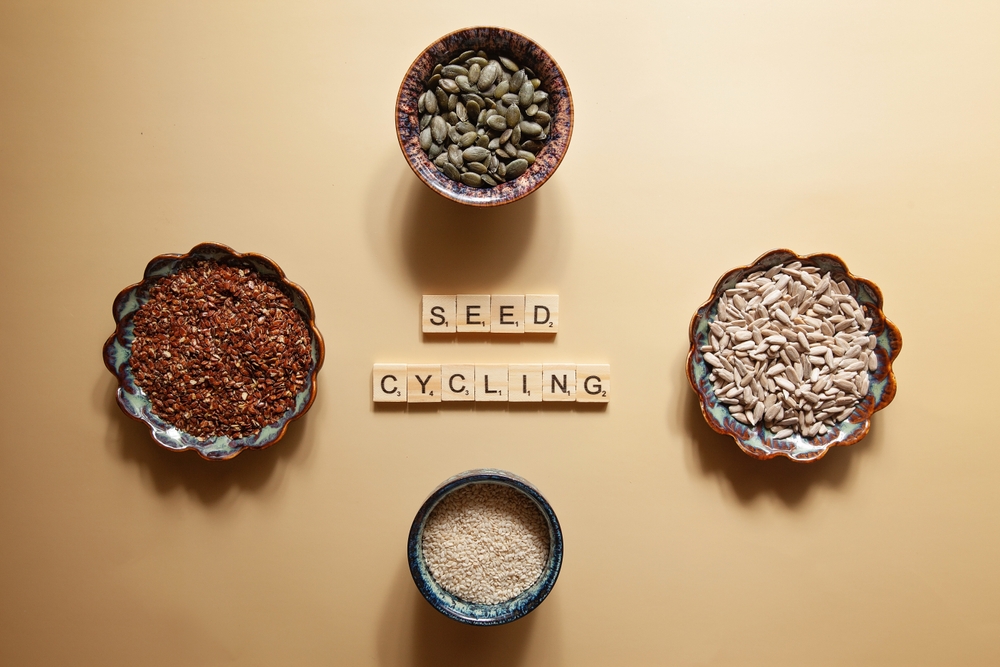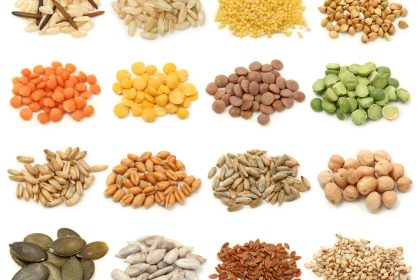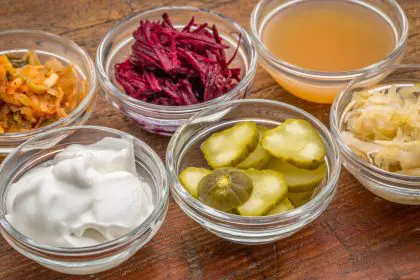Your medicine cabinet is probably filled with supplements promising to fix everything from mood swings to irregular periods, but the answer to your hormonal struggles might be sitting in your pantry right now. Seed cycling has become the wellness world’s latest obsession, with women swearing that rotating specific seeds throughout their menstrual cycle has transformed their periods from monthly torture sessions into manageable events.
The concept sounds almost too simple to work. Eat certain seeds during the first half of your cycle, switch to different seeds during the second half, and supposedly watch your hormones fall into perfect harmony like a well-conducted orchestra. But behind this seemingly basic approach lies a fascinating intersection of nutrition science and traditional wisdom that might actually hold some truth.
Seed cycling represents the kind of natural health approach that appeals to women who are tired of being told their hormonal symptoms are normal and unavoidable. Instead of accepting monthly misery as the price of having a female body, seed cycling offers a proactive way to potentially influence your hormonal health through something as simple as what you sprinkle on your morning yogurt.
The science behind seed cycling makes sense
Seeds contain specific nutrients and compounds that can influence hormone production and metabolism in your body. The basic premise of seed cycling relies on the fact that different seeds provide different building blocks that your body uses to create, process, and eliminate hormones throughout your menstrual cycle.
During the first half of your cycle, when estrogen should be gradually rising, seed cycling protocols typically recommend flax seeds and pumpkin seeds. Flax seeds contain lignans, which are plant compounds that can help modulate estrogen levels by either blocking excess estrogen or providing gentle estrogenic effects when levels are low.
Pumpkin seeds are rich in zinc, which is crucial for progesterone production and overall reproductive health. Zinc deficiency is surprisingly common and can contribute to hormonal imbalances, irregular cycles, and various menstrual symptoms that many women just accept as normal.
The second half of your cycle calls for sunflower seeds and sesame seeds, which support the body during the progesterone-dominant phase. Sunflower seeds provide selenium, an important mineral for liver detoxification and thyroid function, both of which directly impact hormonal balance.
Sesame seeds contain lignans similar to flax seeds but also provide healthy fats and minerals that support hormone production. The combination is designed to help your body maintain adequate progesterone levels while supporting the elimination of excess hormones through improved liver function.
Your hormonal timeline needs different support
Understanding seed cycling requires grasping the basic rhythm of your menstrual cycle and how your hormone levels naturally fluctuate throughout the month. Your body is essentially running two different hormonal programs that require different nutritional support to function optimally.
During days one through fourteen of your cycle, estrogen gradually increases while progesterone remains relatively low. This is when your body is preparing for potential ovulation and pregnancy, and it needs specific nutrients to support healthy estrogen production and metabolism.
The follicular phase, as this first half is called, benefits from nutrients that support estrogen balance without allowing levels to become excessive. Too much estrogen relative to progesterone can cause symptoms like breast tenderness, mood swings, and heavy periods that many women experience regularly.
After ovulation, typically around day fourteen, your hormonal landscape shifts dramatically. Progesterone should increase significantly while estrogen levels fluctuate in a more complex pattern. This luteal phase requires different nutritional support to maintain adequate progesterone levels and help your body process hormones efficiently.
The beauty of seed cycling lies in its simplicity and alignment with your body’s natural rhythms. Instead of taking the same supplements every day regardless of where you are in your cycle, you’re providing targeted nutritional support that matches your changing hormonal needs.
The practical reality of seed cycling
Implementing seed cycling is surprisingly straightforward, which contributes to its appeal for women looking for natural hormone support that doesn’t require complicated protocols or expensive supplements. The basic approach involves eating one to two tablespoons of specific seed combinations daily, depending on where you are in your cycle.
Days one through fourteen call for a combination of ground flax seeds and raw pumpkin seeds. Many women mix these into smoothies, sprinkle them on oatmeal, or blend them into homemade energy balls. The key is grinding flax seeds fresh or buying them pre-ground and storing them properly to preserve their beneficial compounds.
Days fifteen through twenty-eight switch to ground sesame seeds and raw sunflower seeds. These can be incorporated into meals in similar ways, though some women find tahini and sunflower seed butter easier to incorporate than whole seeds.
The timing doesn’t have to be perfect, especially if your cycles are irregular. Many practitioners recommend starting with day one as the first day of your period and adjusting as needed based on your individual cycle length and ovulation timing.
Consistency matters more than perfection when it comes to seed cycling. Missing a day here and there won’t sabotage your efforts, but the approach works best when followed regularly over several months to allow your body time to respond to the nutritional support.
Managing expectations vs experiencing results
Seed cycling isn’t a magic bullet that will instantly transform your hormonal health, but many women report noticeable improvements in various menstrual symptoms after two to three months of consistent practice. The timeline for results aligns with the fact that it takes several cycles for hormonal changes to become apparent.
Common improvements that women report include more regular cycles, reduced PMS symptoms, less severe menstrual cramps, improved energy levels throughout the month, and better mood stability. These changes tend to be gradual rather than dramatic, which can make them easy to miss if you’re not paying attention.
Some women notice improvements in skin conditions like hormonal acne, especially around their period, after several months of seed cycling. The anti-inflammatory effects of the healthy fats in seeds, combined with improved hormone metabolism, can contribute to clearer skin.
Sleep quality improvements are another benefit that some practitioners experience, particularly during the luteal phase when progesterone’s calming effects should be most pronounced. Better hormone balance can contribute to more restful sleep and reduced nighttime anxiety.
However, seed cycling isn’t appropriate for everyone, and some women may not experience significant changes. Factors like underlying health conditions, medication use, severe hormonal imbalances, and lifestyle factors can all influence how well seed cycling works for individual women.
The bigger picture of hormonal health
While seed cycling can be a valuable tool for supporting hormonal balance, it works best as part of a comprehensive approach to reproductive health that includes proper nutrition, stress management, adequate sleep, and regular exercise. Seeds alone can’t overcome the effects of chronic stress, poor diet, or underlying health conditions.
The nutrients in seeds that support hormonal health are also available in other foods, so seed cycling shouldn’t be viewed as the only way to get these benefits. However, the concentrated and cyclical approach of seed cycling may provide more targeted support than randomly eating various seeds throughout the month.
For women with diagnosed hormonal conditions like PCOS, endometriosis, or thyroid disorders, seed cycling should complement rather than replace medical treatment. The approach can potentially enhance the effects of conventional treatments while providing additional nutritional support.
The ritual aspect of seed cycling shouldn’t be underestimated either. Taking time each day to consciously support your hormonal health can increase awareness of your cycle and symptoms, leading to better self-care decisions and earlier recognition of changes that might need attention.
Starting your seed cycling journey
Beginning seed cycling requires minimal investment and preparation, making it an accessible option for women wanting to experiment with natural hormone support. The main requirement is tracking your cycle well enough to know when to switch between seed combinations.
If your cycles are irregular or you’re not currently menstruating due to hormonal birth control, menopause, or other factors, you can still try seed cycling by following the lunar cycle or creating your own twenty-eight day rotation. The approach can be adapted to work with various circumstances.
Quality matters when choosing seeds for cycling. Organic, raw seeds provide the best nutritional value, and proper storage helps preserve their beneficial compounds. Grinding flax seeds fresh or buying small amounts of pre-ground flax ensures maximum potency.
Starting slowly can help your digestive system adjust to increased fiber intake from seeds. Some women experience digestive changes when first implementing seed cycling, so beginning with smaller amounts and gradually increasing to the full recommended serving can minimize discomfort.
Keeping a simple journal or using a cycle tracking app can help you monitor changes and identify patterns as you continue seed cycling. Many women find that paying closer attention to their cycles leads to better understanding of their individual patterns and needs.
Remember that hormonal health is influenced by many factors beyond nutrition, so seed cycling works best when combined with other healthy lifestyle practices. The approach offers a simple, natural way to provide targeted nutritional support for your hormonal health while connecting more deeply with your body’s natural rhythms.

















